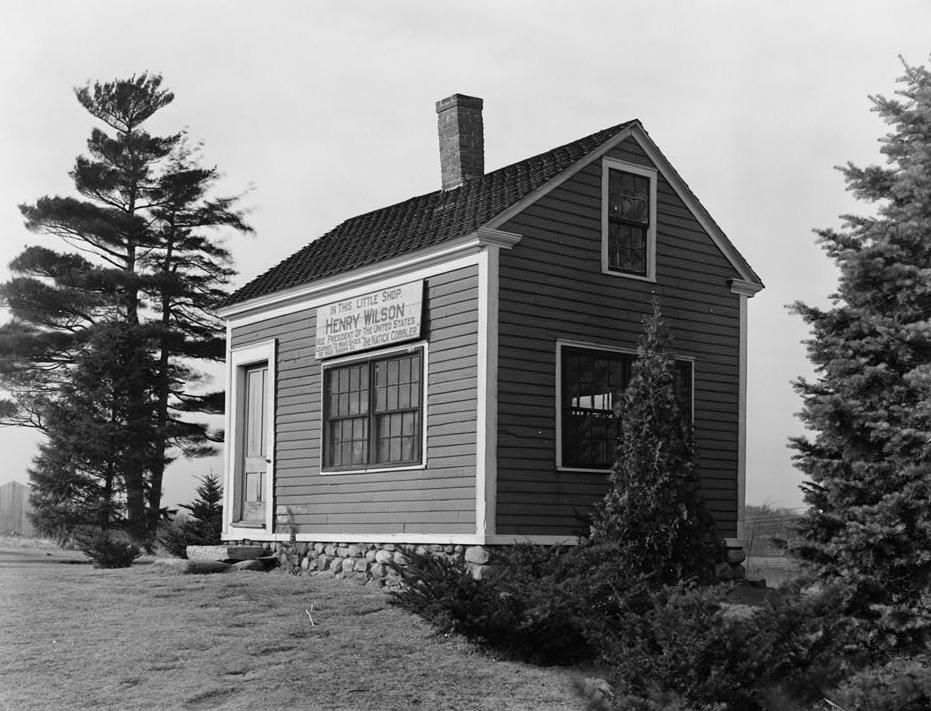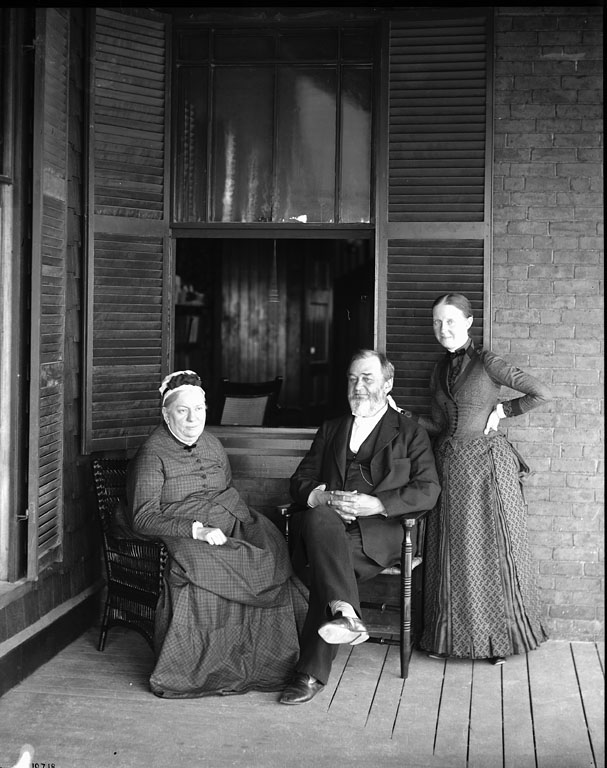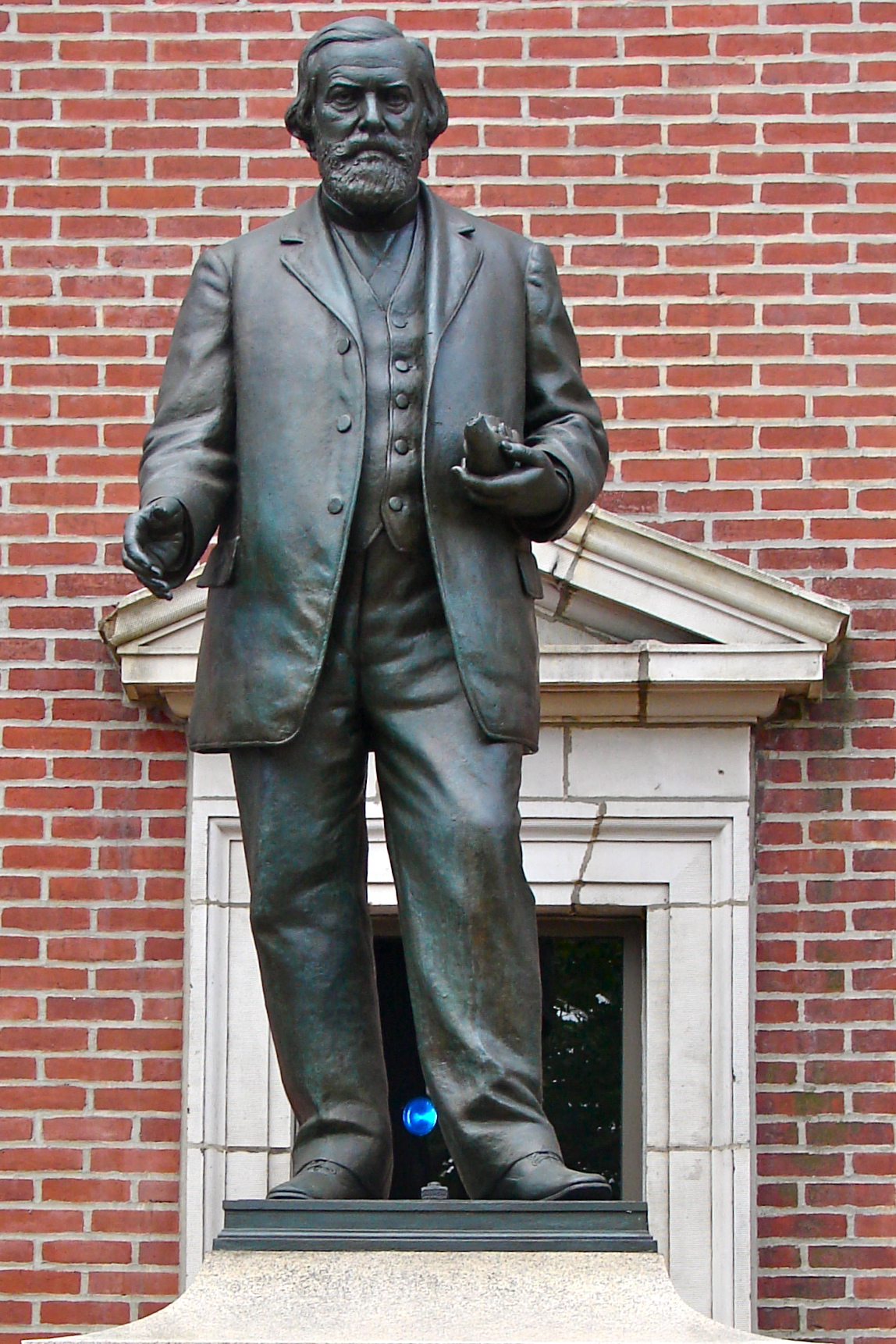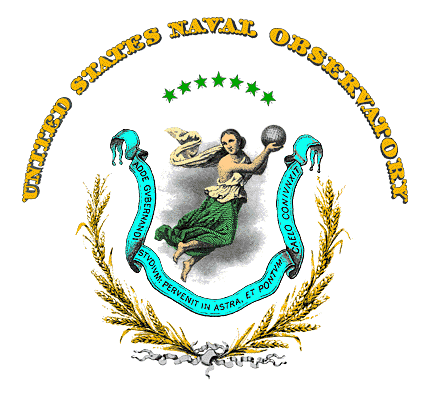|
Scientific Lazzaroni
The Scientific Lazzaroni is a self-mocking name adopted by Alexander Dallas Bache and his group of scientists who flourished before and up to the American Civil War. ("Lazzaroni" was slang for the homeless idlers of Naples who live by chance work or begging - so called from the Hospital of St Lazarus, which served as their refuge.) These scientists then gained greater support and laid the foundation for the National Academy of Sciences. However, the National Academy did not solve the problems facing a nation plunged in Civil War – as the Lazzaroni had hoped, nor did it centralize American scientific efforts. These Lazzaroni were mostly professional physical scientists, interested in geophysical problems, who admitted a few kindred souls from other fields to their ranks. Their interests and range of influence extended to all of the sciences and included much of the research performed in universities and the government. They were consciously promoting the development of a profession ... [...More Info...] [...Related Items...] OR: [Wikipedia] [Google] [Baidu] |
Alexander Dallas Bache
Alexander Dallas Bache (July 19, 1806 – February 17, 1867) was an American physicist, scientist, and surveyor who erected coastal fortifications and conducted a detailed survey to map the mideastern United States coastline. Originally an army engineer, he later became Superintendent of the United States Coast Survey, and built it into the foremost scientific institution in the country before the Civil War. Early life and family Alexander Bache was born in Philadelphia, the son of Richard Bache, Jr., and Sophia Burrell Dallas Bache. He came from a prominent family as he was the nephew of Vice-President George M. Dallas and naval hero Alexander J. Dallas. He was the grandson of Secretary of the Treasury Alexander Dallas and was the great-grandson of Benjamin Franklin. United States Army After graduating from the United States Military Academy at West Point in 1825, as first in his class, he was an assistant professor of engineering there for some time. As a second lieutena ... [...More Info...] [...Related Items...] OR: [Wikipedia] [Google] [Baidu] |
Henry Wilson
Henry Wilson (born Jeremiah Jones Colbath; February 16, 1812 – November 22, 1875) was an American politician who was the 18th vice president of the United States from 1873 until his death in 1875 and a senator from Massachusetts from 1855 to 1873. Before and during the American Civil War, he was a leading Republican, and a strong opponent of slavery. Wilson devoted his energies to the destruction of " Slave Power", the faction of slave owners and their political allies which anti-slavery Americans saw as dominating the country. Originally a Whig, Wilson was a founder of the Free Soil Party in 1848. He served as the party chairman before and during the 1852 presidential election. Wilson worked diligently to build an anti-slavery coalition, which came to include the Free Soil Party, anti-slavery Democrats, New York Barnburners, the Liberty Party, anti-slavery members of the Native American Party (Know Nothings), and anti-slavery Whigs (called Conscience Whigs). When the ... [...More Info...] [...Related Items...] OR: [Wikipedia] [Google] [Baidu] |
Spencer Fullerton Baird
Spencer Fullerton Baird (; February 3, 1823 – August 19, 1887) was an American naturalist, ornithologist, ichthyologist, herpetologist, and museum curator. Baird was the first curator to be named at the Smithsonian Institution. He eventually served as assistant Secretary of the Smithsonian from 1850 to 1878, and as Secretary from 1878 until 1887. He was dedicated to expanding the natural history collections of the Smithsonian which he increased from 6,000 specimens in 1850 to over 2 million by the time of his death. He published over 1,000 works during his lifetime. Early life and education Spencer Fullerton Baird was born in Reading, Pennsylvania in 1823. His mother was a member of the prominent Philadelphia Biddle family; he was a nephew of Speaker of the Pennsylvania Senate Charles B. Penrose and a first cousin, once removed, of U.S. Senator Boies Penrose and his distinguished brothers, Richard, Spencer, and Charles. He became a self-trained naturalist as a young man, le ... [...More Info...] [...Related Items...] OR: [Wikipedia] [Google] [Baidu] |
John William Draper
John William Draper (May 5, 1811 – January 4, 1882) was an English-born American scientist, philosopher, physician, chemist, historian and photographer. He is credited with producing the first clear photograph of a female face (1839–40) and the first detailed photograph of the moon in 1840. He was also the first president of the American Chemical Society (1876–77) and a founder of the New York University School of Medicine. One of Draper's books, the ''History of the Conflict between Religion and Science'', popularised the conflict thesis proposing intrinsic hostility in the relationship between religion and science. It was widely read and was translated into several languages. His son, Henry Draper, and his granddaughter, Antonia Maury, were astronomers; his granddaughter, Carlotta Maury (Antonia's younger sister), was a paleontologist; his eldest son, John Christopher Draper, was a chemist; and son , was a meteorologist. [...More Info...] [...Related Items...] OR: [Wikipedia] [Google] [Baidu] |
Joseph Leidy
Joseph Mellick Leidy (September 9, 1823 – April 30, 1891) was an American paleontologist, parasitologist and anatomist. Leidy was professor of anatomy at the University of Pennsylvania, later was a professor of natural history at Swarthmore College and the director of scientific and educational programs at the Wagner Free Institute of Science. His book ''Extinct Fauna of Dakota and Nebraska'' (1869) contained many species not previously described and many previously unknown on the North American continent. At the time, scientific investigation was largely the province of wealthy amateurs. The Leidy Glacier in northwest Greenland was named by Robert Peary after him. Early life and family Joseph Leidy was born on September 9, 1823, to an established Philadelphia family of Pennsylvania Germans. His father, Philip, was a hatter; his mother, Catharine, died during childbirth when he was young. His father then married his wife's first cousin, Christiana Mellick. Leidy also ... [...More Info...] [...Related Items...] OR: [Wikipedia] [Google] [Baidu] |
Matthew Fontaine Maury
Matthew Fontaine Maury (January 14, 1806February 1, 1873) was an American oceanographer and naval officer, serving the United States and then joining the Confederacy during the American Civil War. He was nicknamed "Pathfinder of the Seas" and is considered a founder of modern oceanography. He wrote extensively on the subject and his book, ''The Physical Geography of the Sea'' (1855), was the first comprehensive work on oceanography to be published. In 1825, at 19, Maury obtained, through US Representative Sam Houston, a midshipman's warrant in the United States Navy. As a midshipman on board the frigate , he almost immediately began to study the seas and record methods of navigation. When a leg injury left him unfit for sea duty, Maury devoted his time to the study of navigation, meteorology, winds, and currents. He became Superintendent of the United States Naval Observatory and head of the Depot of Charts and Instruments. There, Maury studied thousands of ships' logs and char ... [...More Info...] [...Related Items...] OR: [Wikipedia] [Google] [Baidu] |
Charles William Eliot
Charles William Eliot (March 20, 1834 – August 22, 1926) was an American academic who was president of Harvard University from 1869 to 1909the longest term of any Harvard president. A member of the prominent Eliot family of Boston, he transformed Harvard from a respected provincial college into America's preeminent research university. Theodore Roosevelt called him "the only man in the world I envy." Early life Charles Eliot was a scion of the wealthy Eliot family of Boston. He was the son of politician Samuel Atkins Eliot (politician), Samuel Atkins Eliot and his wife Mary (née Lyman) and was the grandchild of banker Samuel Eliot (banker), Samuel Eliot. He was one of five siblings and the only boy. Eliot graduated from Boston Latin School in 1849 and from Harvard University in 1853. He was later made an honorary member of the Hasty Pudding Theatricals, Hasty Pudding. Although he had high expectations and obvious scientific talents, the first fifteen years of Eliot's career w ... [...More Info...] [...Related Items...] OR: [Wikipedia] [Google] [Baidu] |
William Barton Rogers
William Barton Rogers (December 7, 1804 – May 30, 1882) was an American geologist, physicist, and educator at the College of William & Mary from 1828 to 1835 and at the University of Virginia from 1835 to 1853. In 1861, Rogers founded the Massachusetts Institute of Technology. The university opened in 1865 after the American Civil War. Because of his affiliation with Virginia, Mount Rogers, the highest peak in the state, is named after him. Biography Early life Rogers was born on December 7, 1804, in Philadelphia, Pennsylvania. He was the second son of Patrick Kerr Rogers and Hannah Blythe and was of Irish, Scottish, and English extraction. Patrick Rogers was born in Newtownstewart, County Tyrone, Ireland and had immigrated at the end of the 18th century to America, where he graduated from the University of Pennsylvania and practiced medicine. When William Barton was born, Patrick Rogers was tutor at Penn. In 1819 Patrick Rogers became professor of natural philosophy and mat ... [...More Info...] [...Related Items...] OR: [Wikipedia] [Google] [Baidu] |
Asa Gray
Asa Gray (November 18, 1810 – January 30, 1888) is considered the most important American botanist of the 19th century. His '' Darwiniana'' was considered an important explanation of how religion and science were not necessarily mutually exclusive. Gray was adamant that a genetic connection must exist between all members of a species. He was also strongly opposed to the ideas of hybridization within one generation and special creation in the sense of its not allowing for evolution. He was a strong supporter of Darwin, although Gray's theistic evolution was guided by a Creator. As a professor of botany at Harvard University for several decades, Gray regularly visited, and corresponded with, many of the leading natural scientists of the era, including Charles Darwin, who held great regard for him. Gray made several trips to Europe to collaborate with leading European scientists of the era, as well as trips to the southern and western United States. He also built an extensive ... [...More Info...] [...Related Items...] OR: [Wikipedia] [Google] [Baidu] |
United States Naval Observatory
United States Naval Observatory (USNO) is a scientific and military facility that produces geopositioning, navigation and timekeeping data for the United States Navy and the United States Department of Defense. Established in 1830 as the Depot of Charts and Instruments, it is one of the oldest scientific agencies in the United States, and remains the country's leading authority for astronomical and timing data for all purposes. The observatory is located in Northwest Washington, D.C. at the northwestern end of Embassy Row. It is among the few pre-20th century astronomical observatories located in an urban area; initially located in Foggy Bottom near the city's center, it was relocated to its current location in 1893 to escape light pollution. The USNO has conducted significant scientific studies throughout its history, including measuring the speed of light, observing solar eclipses, and discovering the moons of Mars. Its achievements including providing data for the first ra ... [...More Info...] [...Related Items...] OR: [Wikipedia] [Google] [Baidu] |
Smithsonian Institution
The Smithsonian Institution ( ), or simply the Smithsonian, is a group of museums and education and research centers, the largest such complex in the world, created by the U.S. government "for the increase and diffusion of knowledge". Founded on August 10, 1846, it operates as a trust instrumentality and is not formally a part of any of the three branches of the federal government. The institution is named after its founding donor, British scientist James Smithson. It was originally organized as the United States National Museum, but that name ceased to exist administratively in 1967. Called "the nation's attic" for its eclectic holdings of 154 million items, the institution's 19 museums, 21 libraries, nine research centers, and zoo include historical and architectural landmarks, mostly located in the District of Columbia. Additional facilities are located in Maryland, New York, and Virginia. More than 200 institutions and museums in 45 states,States without Smithsonian ... [...More Info...] [...Related Items...] OR: [Wikipedia] [Google] [Baidu] |
Jefferson Davis
Jefferson F. Davis (June 3, 1808December 6, 1889) was an American politician who served as the president of the Confederate States from 1861 to 1865. He represented Mississippi in the United States Senate and the House of Representatives as a member of the Democratic Party before the American Civil War. He had previously served as the United States Secretary of War from 1853 to 1857 under President Franklin Pierce. Davis, the youngest of ten children, was born in Fairview, Kentucky. He grew up in Wilkinson County, Mississippi, and also lived in Louisiana. His eldest brother Joseph Emory Davis secured the younger Davis's appointment to the United States Military Academy. After graduating, Jefferson Davis served six years as a lieutenant in the United States Army. He fought in the Mexican–American War (1846–1848) as the colonel of a volunteer regiment. Before the American Civil War, he operated in Mississippi a large cotton plantation which his brother Joseph had giv ... [...More Info...] [...Related Items...] OR: [Wikipedia] [Google] [Baidu] |






.jpg)


